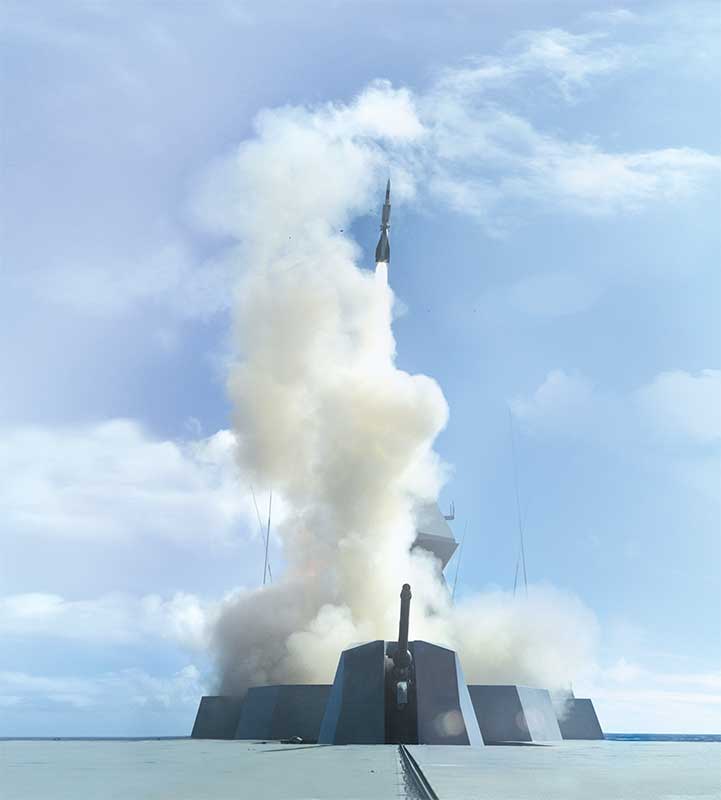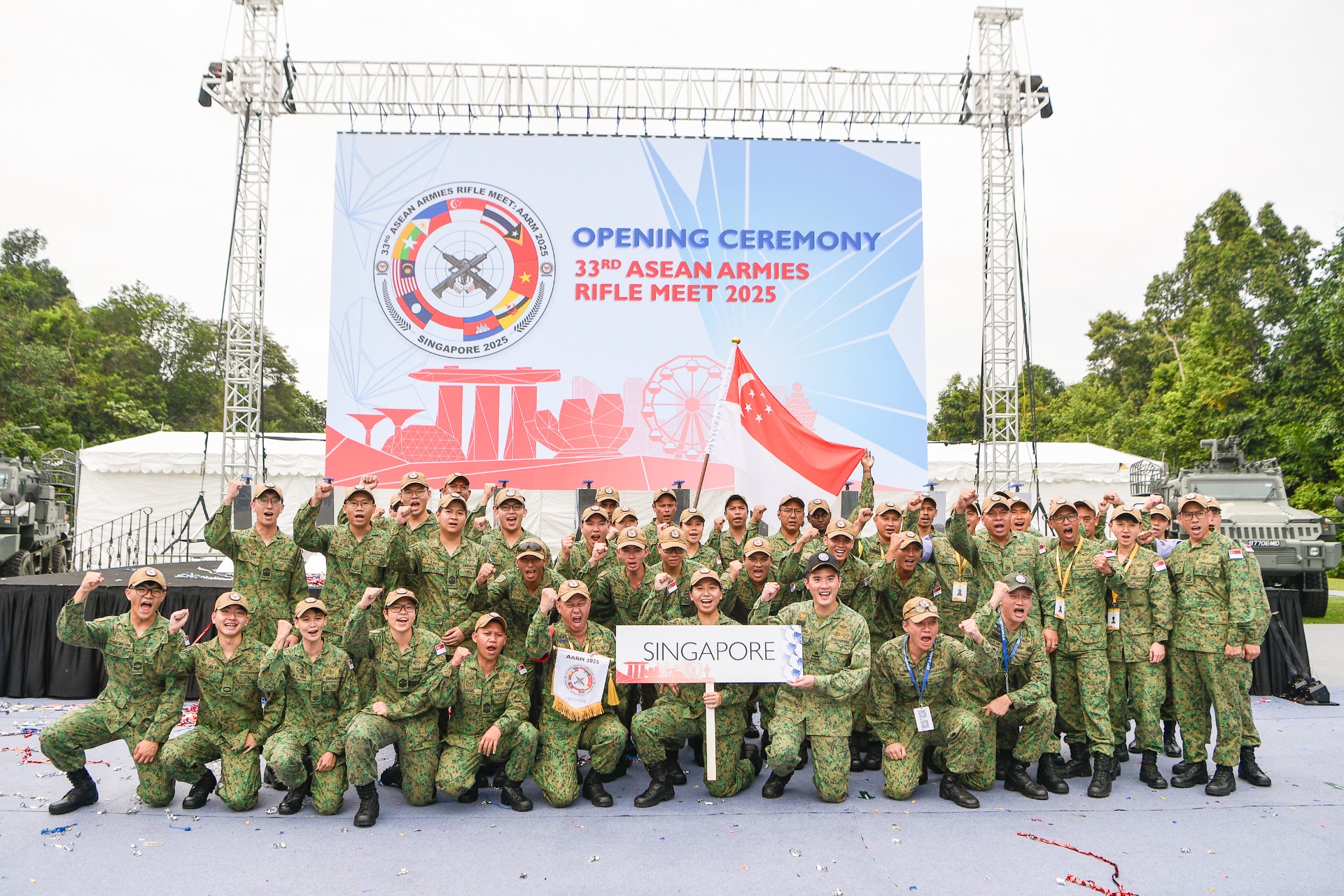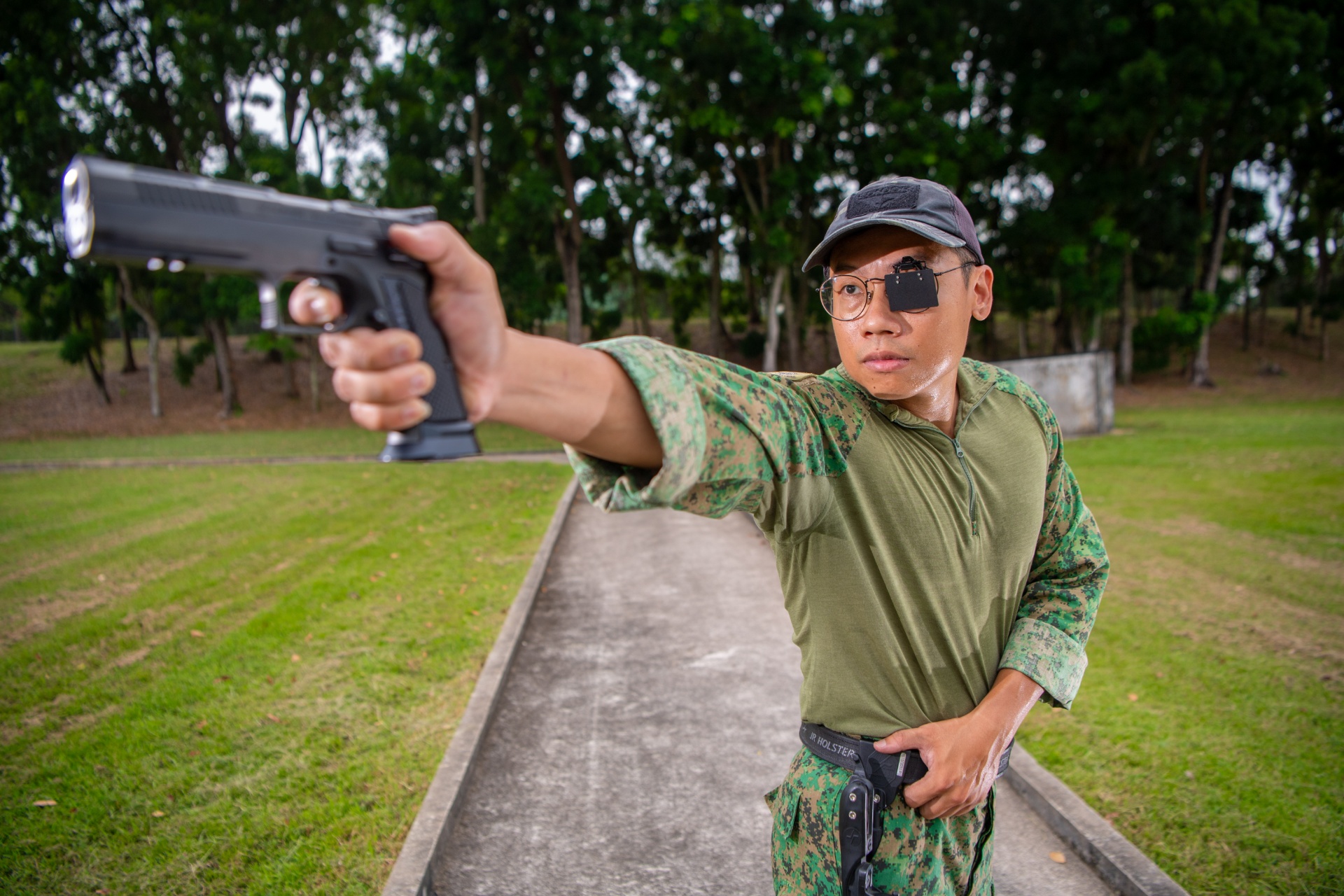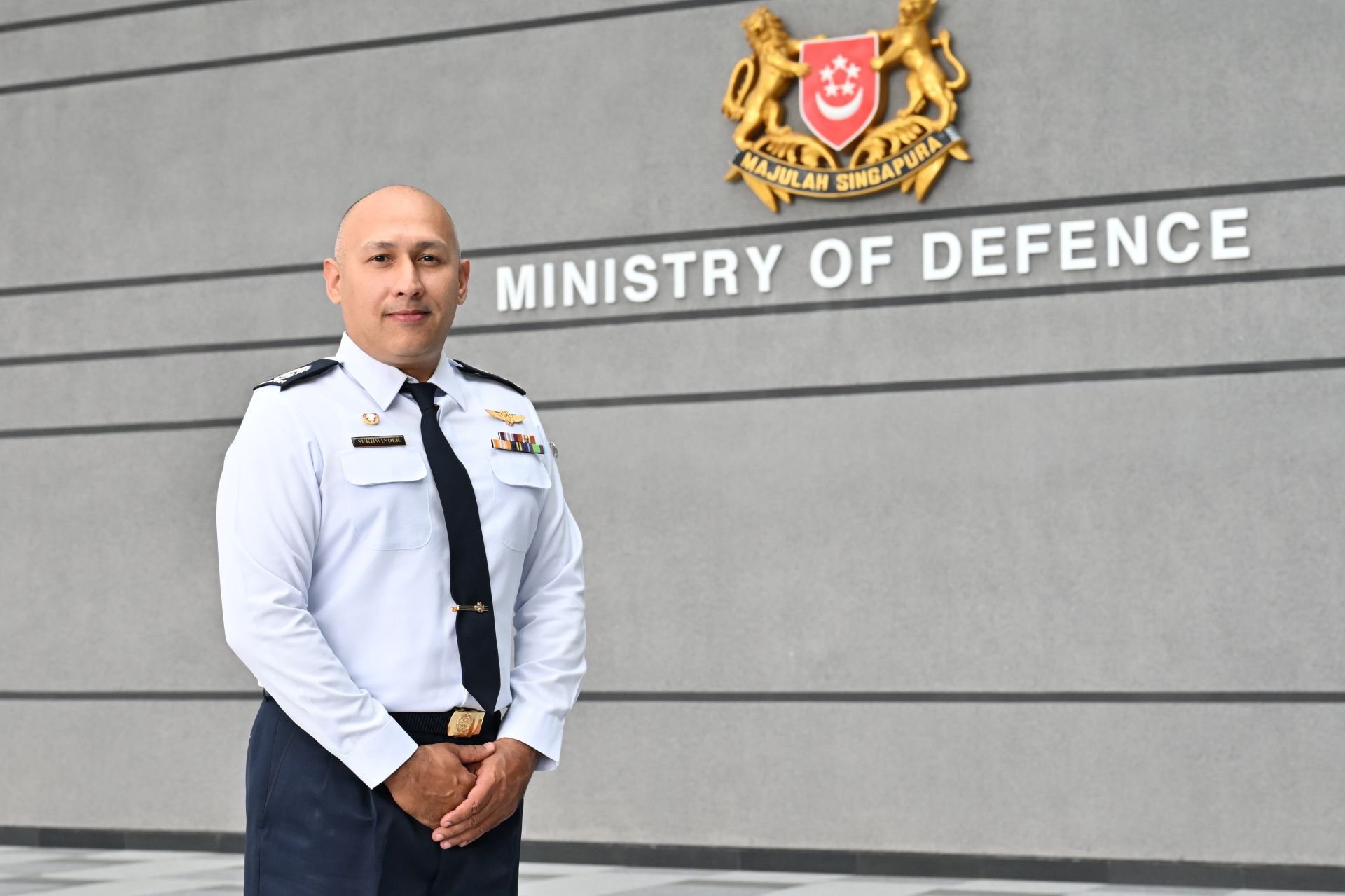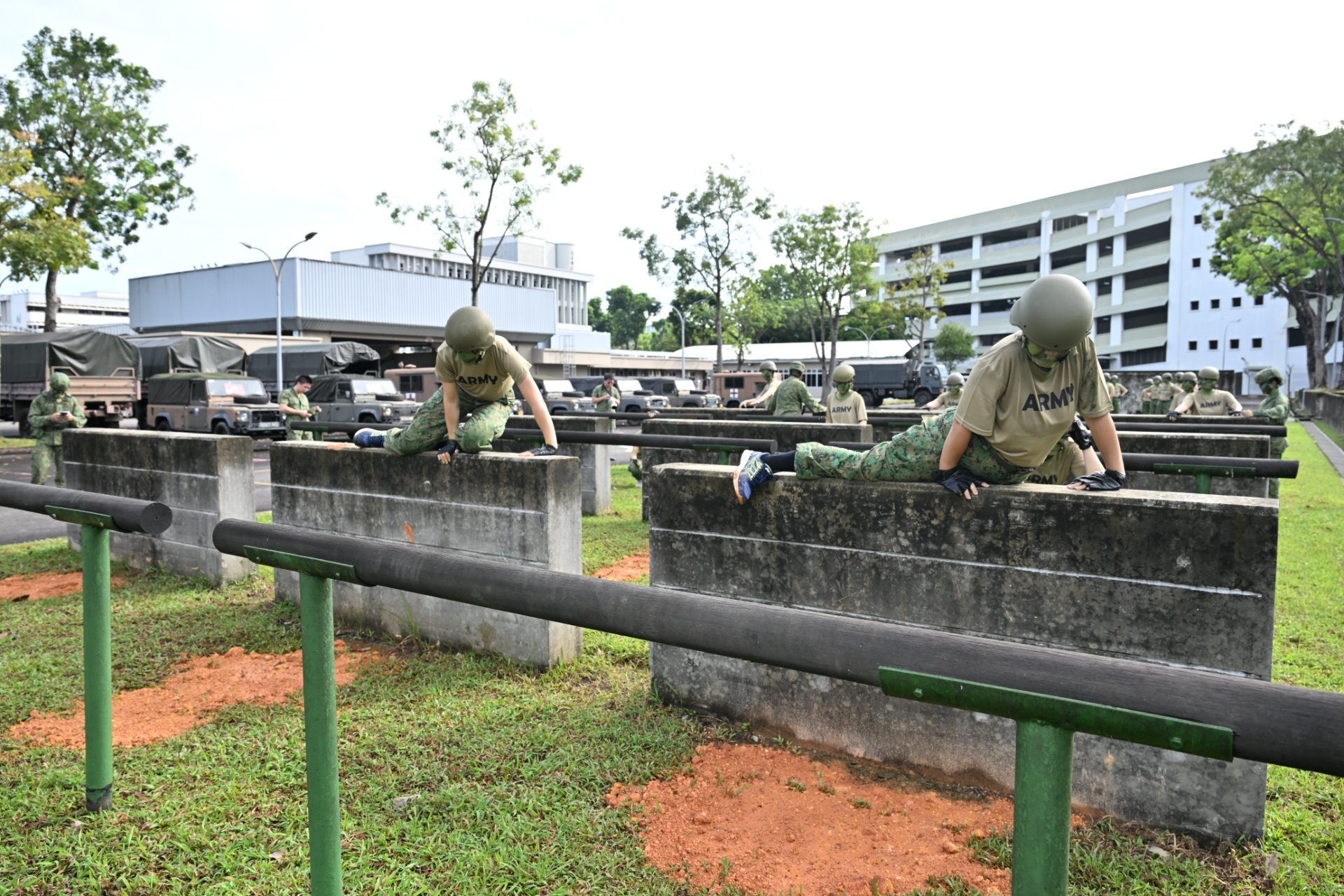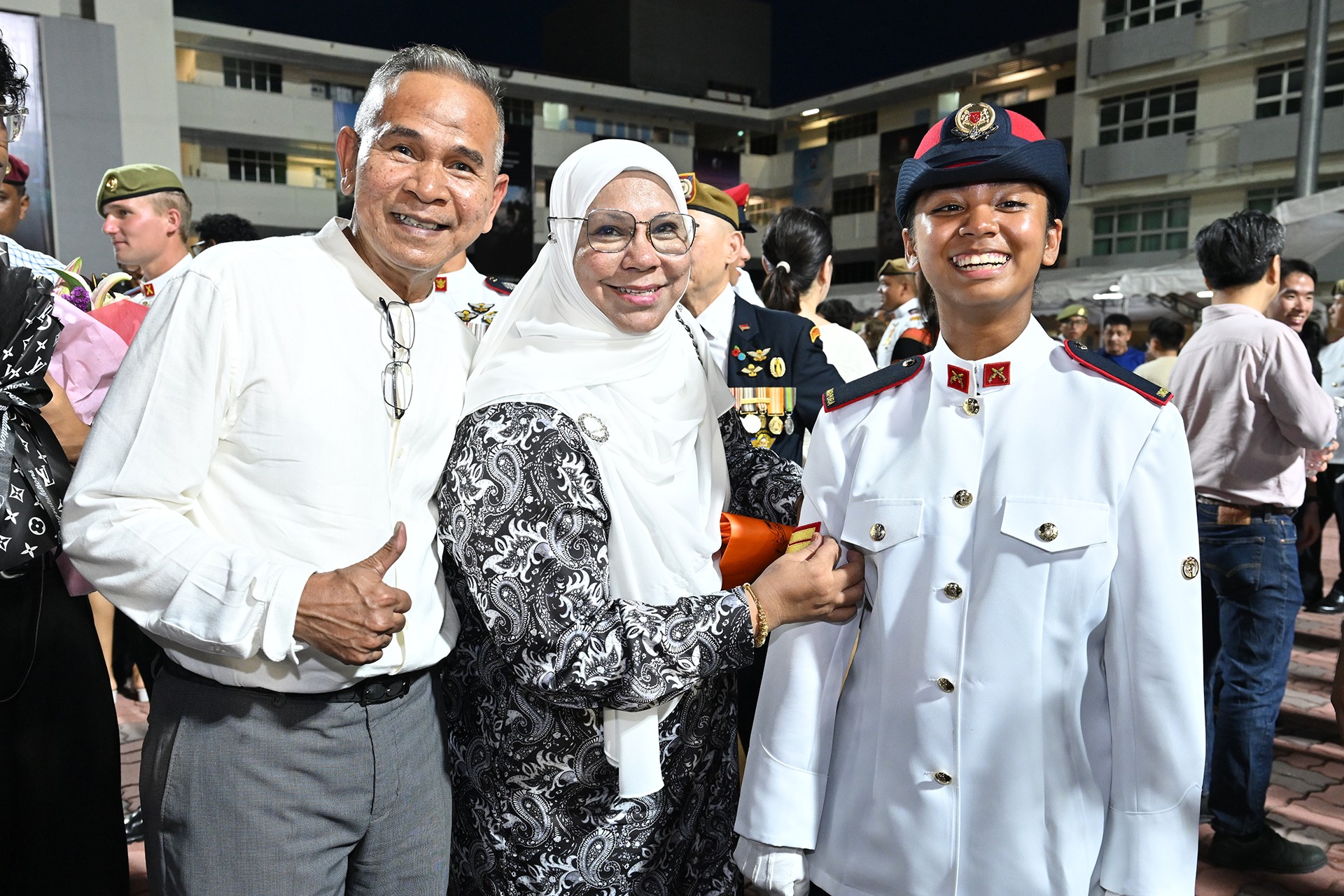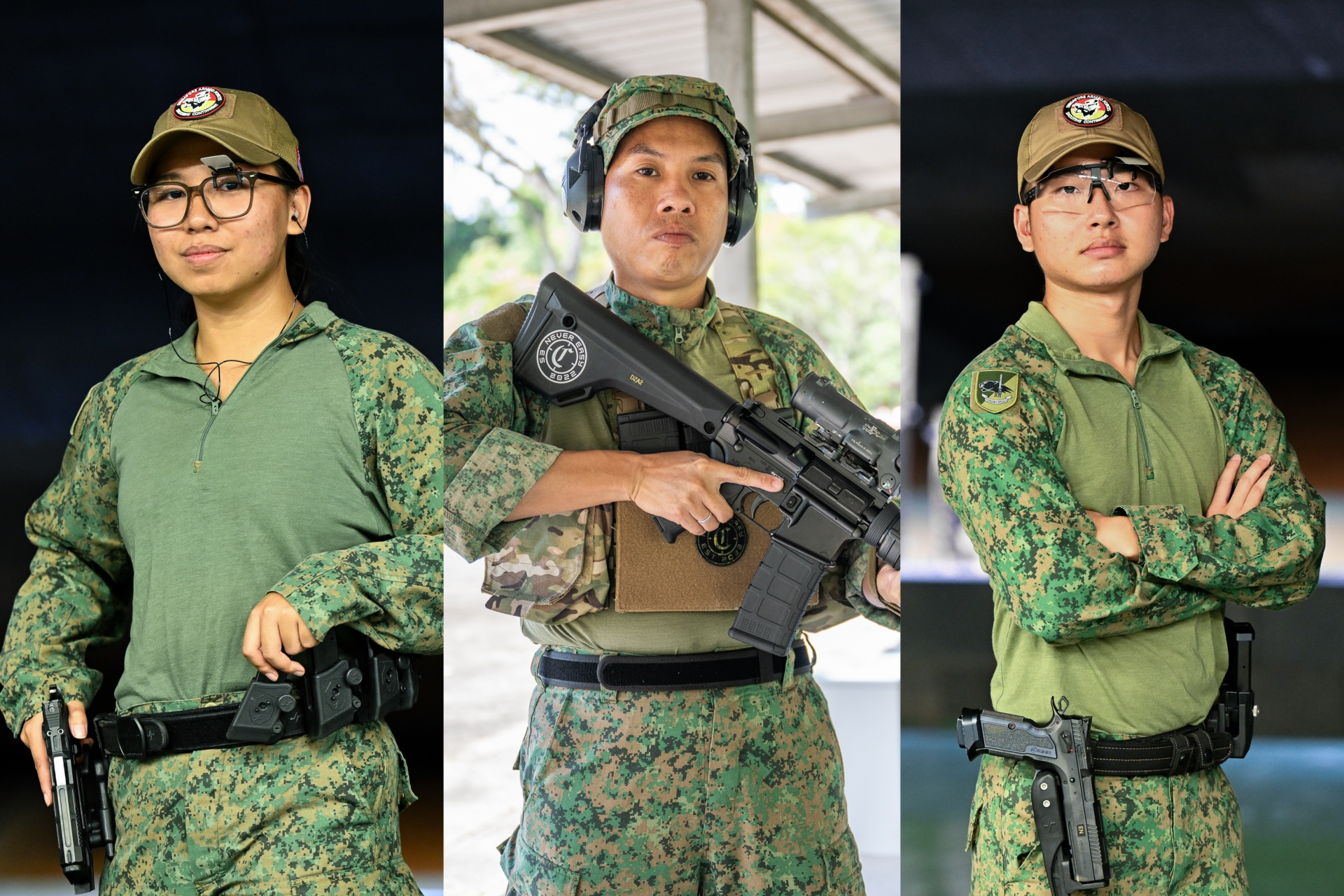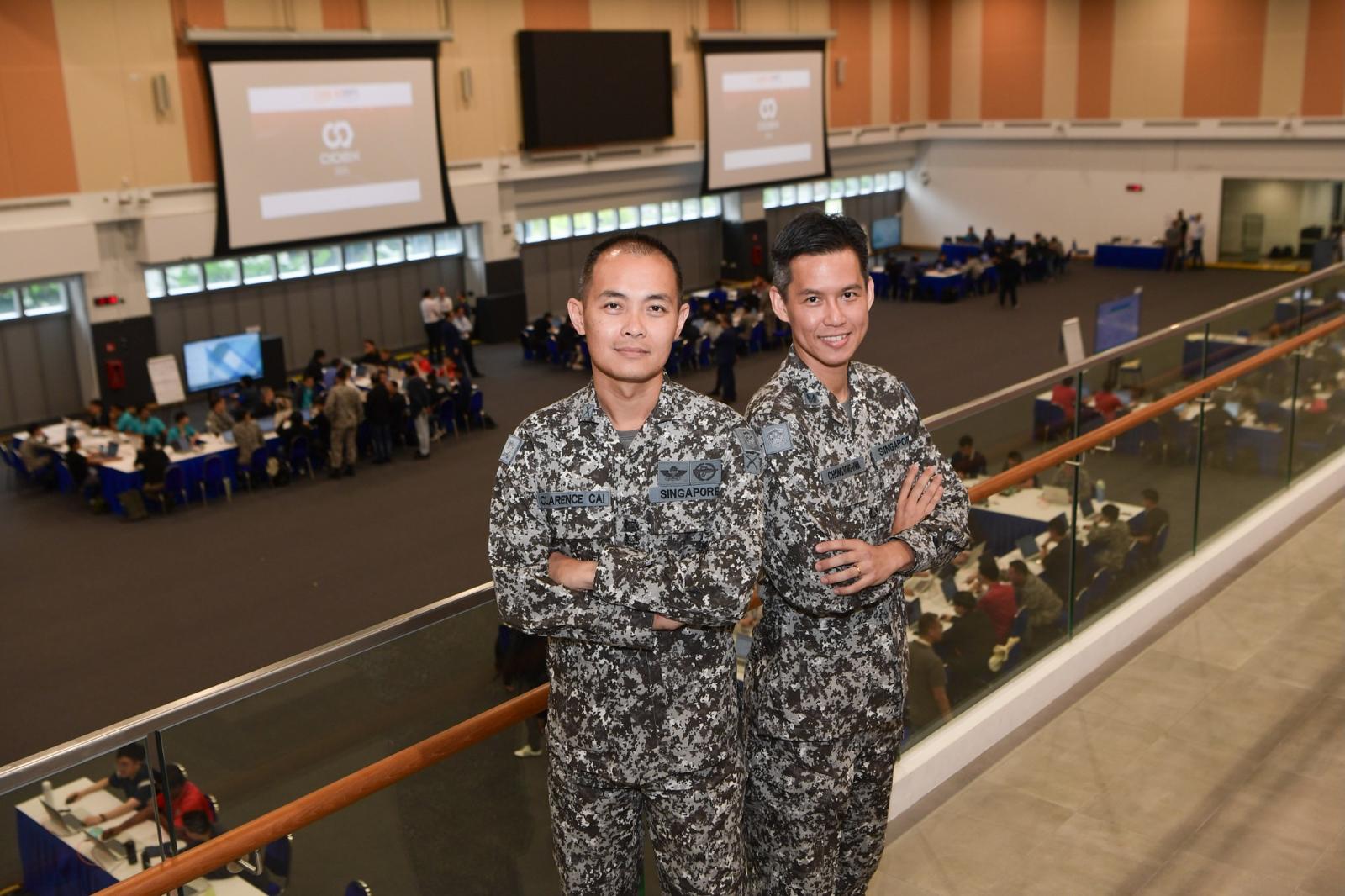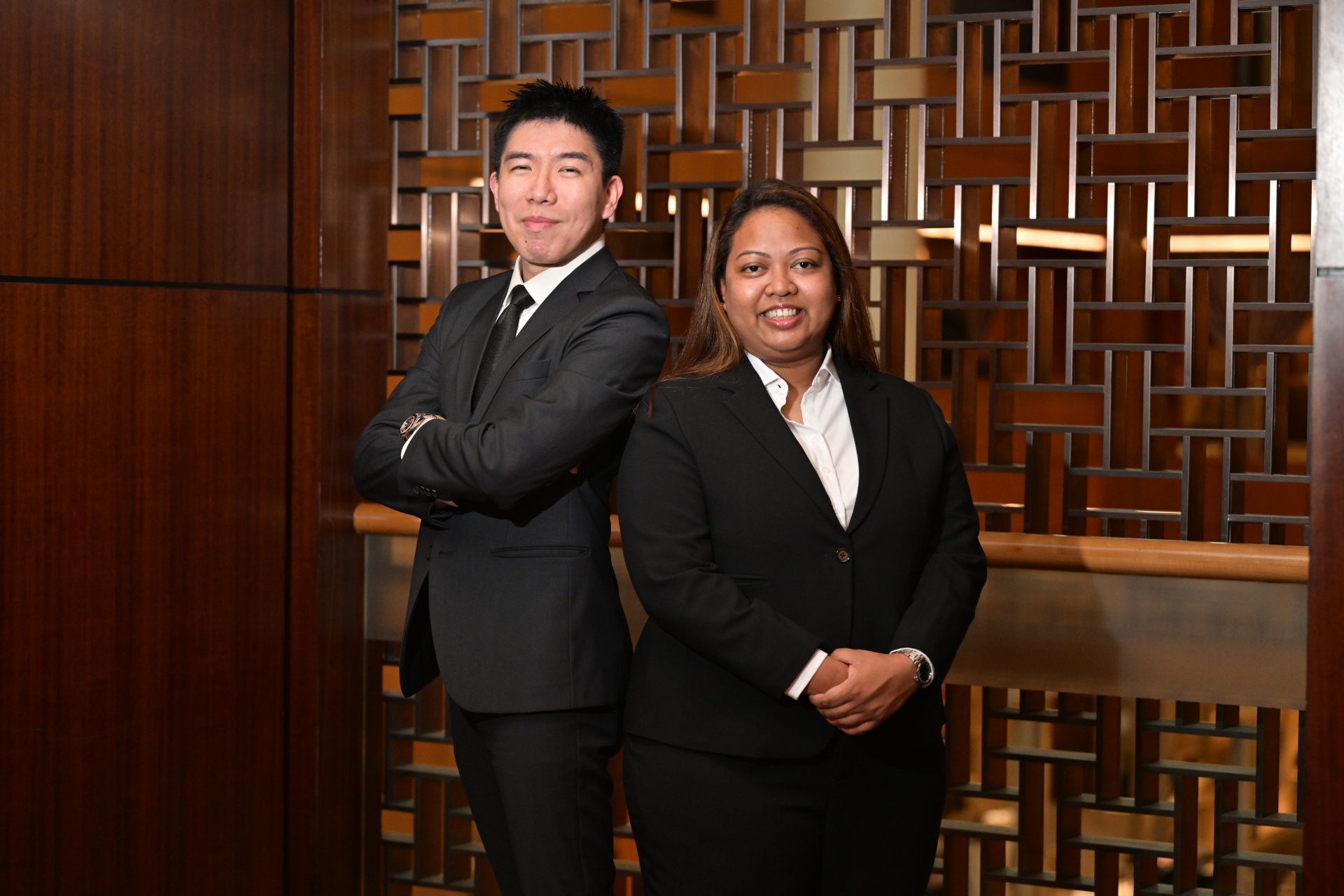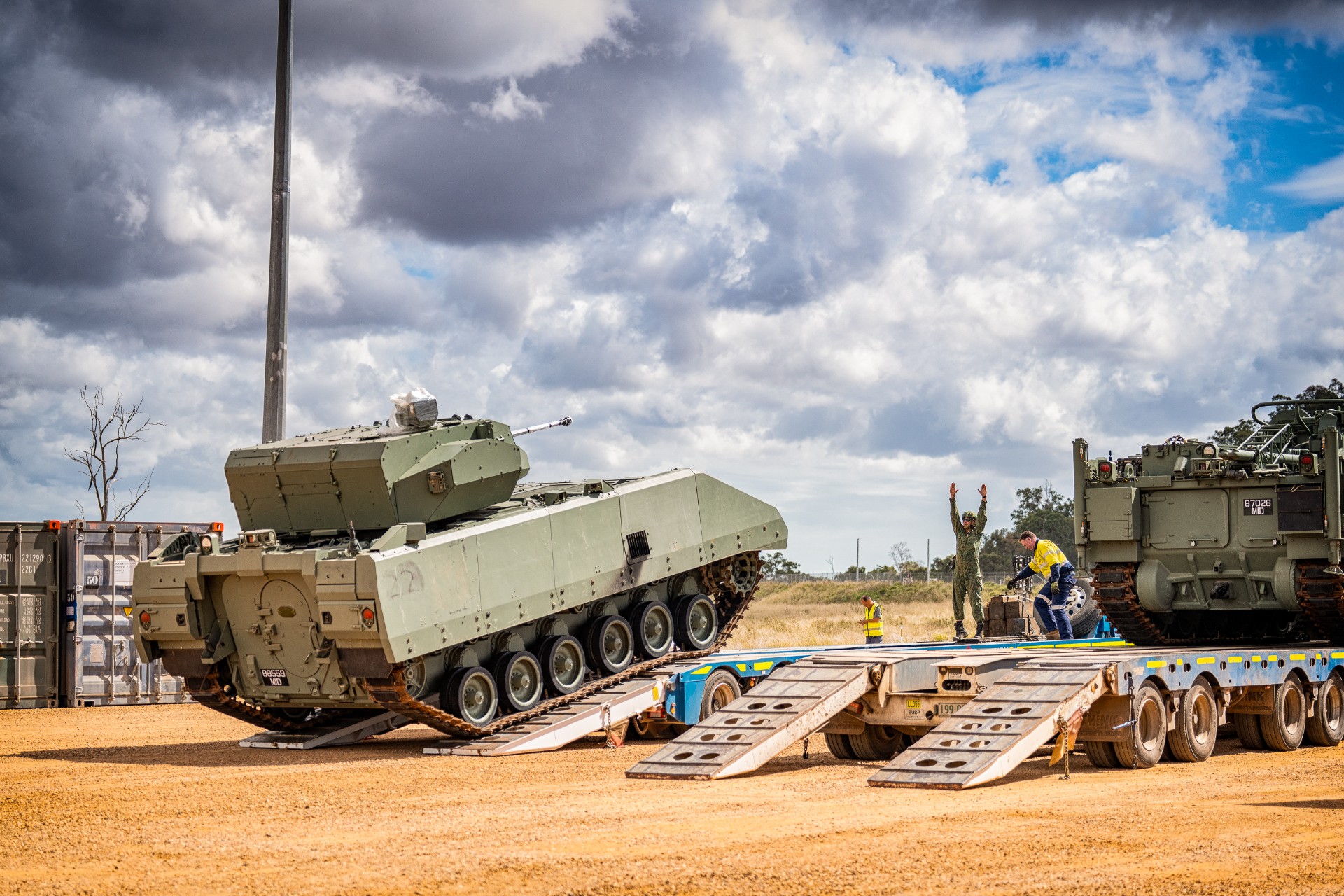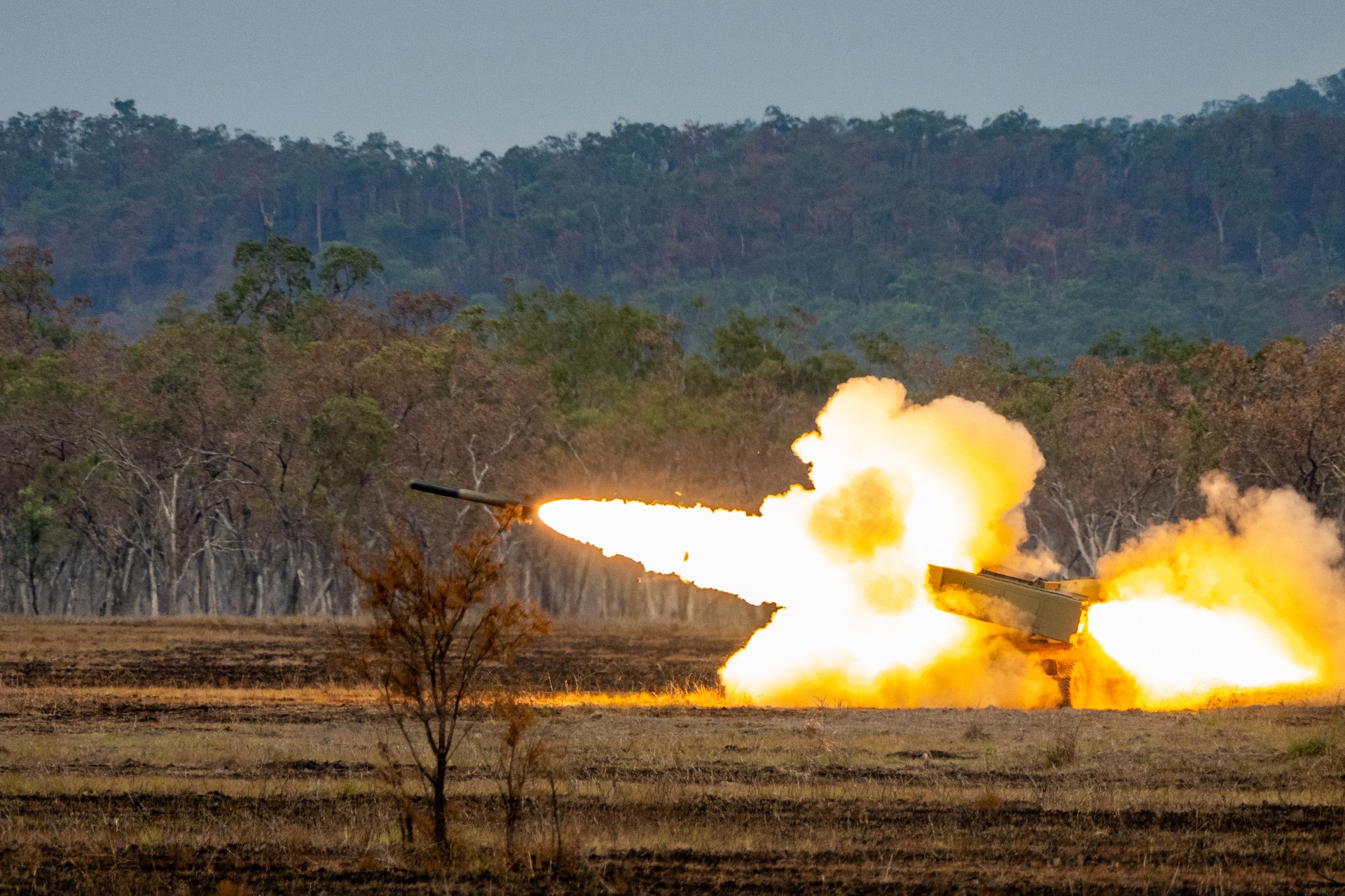WHAT A BLAST!
STORY // Ong Hong Tat
PHOTO // Ong Hong Tat & courtesy of RSN & USN
When the world's naval forces gather biennially for Exercise RIMPAC, Pearl Harbour becomes a busier place. This year, the historic naval base in Hawaii played host to about 50 vessels and more than 200 aircraft, operated by 25,000 personnel.
Among those vessels was the RSN's frigate RSS Steadfast, which took on bigger responsibilities this year. For example, it led two other warships to RIMPAC, marking the first time that a non-United States Navy (USN) ship has commanded a group sail to RIMPAC.
In another first for the RSN, four officers joined the maritime shore command team, or the Combined Force Maritime Component Command (CFMCC), to assist in the planning and monitoring of the exercise.
"RIMPAC gives us a chance to work with established navies in very high-end and complex scenarios, and an opportunity to hone our warfare capabilities," said Rear-Admiral Lew Chuen Hong, Fleet Commander, who observed the live firing of an Aster Surface-to-Air missile by RSS Steadfast on 16 Jul.
Missile away
The tension on board RSS Steadfast was palpable on the day of the live firing; the crew were quieter, most of them hunched over the screens at their stations.
In the Combat Information Centre, the crew performed their final checks to make sure that the deadly package was dispatched without a hitch. Midway through the morning, an incoming missile was detected.
Tracking the trajectory of the incoming missile, the team primed the Aster missile. The order to fire was given and the missile threat, simulated by a drone, was destroyed.
The firing was an exercise in coordination and precision, as many teams on board the ship needed to work in unison, passing information along to locate and track the fast-moving target and mount the appropriate response.
"Prior to this (firing), the team went through extensive system health checks to make sure that it would go without a hitch," said Military Expert (ME) 2 Li Zai Qing, RSS Steadfast's Chief Weapon Control Systems.
Taking lead
With 26 countries operating together for RIMPAC 2016, planning for the exercise took on a mammoth scale. For the shore command team, it meant putting in 14-hour workdays for the duration of the exercise.
Although this was the first time RSN officers had joined the shore command team, they were assigned leadership positions in their respective planning cells. "As key leaders within our cells, we direct planning, chair working-group meetings, and seek the approval of plans from higher command," said Lieutenant Colonel Chuah Meng Soon, Director Future Fires within the CMFCC.
For those based on the ship, the pace was similar. "Even before arriving in Pearl Harbour, the team was already at work running through organising tasks so that we could hit the ground running," said Major (MAJ) Karl Su, who was part of the Task Unit command team based on board RSS Steadfast.
Upping interoperability
The Singapore warship participated in RIMPAC under Task Force (TF) 170, which oversees four Task Groups (TGs). RSS Steadfast was assigned as one of the two task unit commanders under TG 170.1.
When asked what it was like to operate with other navies, MAJ Su said: "Different operating procedures and languages make passing instructions tricky, but as Singaporeans with a multilingual background, we often have the chance to be a translator and bridge-builder."
Said MAJ Su with a laugh: "Also, having a glossary of military jargon was definitely useful to decipher the acronyms that our counterparts are fond of using!" With more than 30 ships exercising in the same area, the team had to make sure that each ship fulfilled its training objectives and that there were no scheduling conflicts.
When asked to comment on how RSS Steadfast performed at RIMPAC, Sea Combat Commander of TG 170.1 Captain Jason Boyd from the Canadian Navy said: "RSS Steadfast has certainly impressed me in the manner in which she prepares for events, and forward-thinks to anticipate any conflicts or issues that may be on the horizon."
During the sea phase, RSS Steadfast received fuel out at sea from the oiler USNS Rappahannock, which also supplies the USN's Great Green Fleet, named for its use of biofuel and alternative sources of energy.
Replenishment out at sea is a risky manoeuvre, as ships can collide when passing close to each other, due to a natural phenomenon called the Bernoulli effect. The low pressure area created when the two ships move closer together sucks them towards one another. To counter this effect, the ships have to steer slightly away from each other while making sure that they are close enough for the re-fuelling line to remain connected - a delicate operation, to say the least.
Making friends
The crew of RSS Steadfast also took the time to foster deeper friendships, hosting a cocktail reception for RIMPAC 2016 leadership and foreign navies, before the sea phase kicked off on 12 Jul.
From the easy banter and many group photographs taken on deck, the depth of ties between the navies was clear to see. Said Vice-Admiral Nora Tyson, Commander of the USN's 3rd Fleet and Commander, Combined Task Force for RIMPAC 2016: "I cherish my relationship with Singapore and the RSN; and it is one of the most professional navies in the world."
The 59-year-old had lived in Singapore from 2007 to 2010 when she was Commander of the USN's logistics group in the Western Pacific. She was also there for the commissioning of the last two RSN frigates: RSS Stalwart and RSS Supreme.
Honing skills
For the RSS Steadfast crew, the exercise period was hectic as daily operations ramped up in complexity.
Every crew member PIONEER spoke to said that the operations tempo was higher than usual. This included the air detachment, which was tasked to keep the aircraft at high alert levels.
"We carry out servicing and maintenance whenever the aircraft returns. If there are night flights, it could mean working into the early hours of the morning (to make sure that the S-70B naval helicopter is always ready)," said ME1 See Zhi Yong, an Air Force Engineer from the Republic of Singapore Air Force's (RSAF's) 123 Squadron.
For the pilots, it meant more time spent flying and honing their combat skills. "Out here, the high pitch and roll due to the sea state, combined with high-speed winds and the fact that there are more ships and aircraft exercising together, makes this more challenging for us," said Captain (CPT) Kelvin Chan, an S-70B pilot.
Over the course of the sea phase, the S-70B naval helicopter flew more than 100 hours. Said CPT Joseph Boey, a Tactical Coordination Officer (TACCO): "One of the biggest takeaways for me were the anti-submarine exercises we did... Exercising out here, with so many other submarines and ships, in a much larger area of land and sea, is an invaluable opportunity for us to hone our skills."
Two RSAF pilots, an RSN TACCO and a Sensor Operator operate the S-70B helicopter together.
This RSAF-RSN crew combination is unique to Singapore most navies have their own pilots and air departments.
Life on ship
The ship is usually humming with activity throughout any given 24-hour period and it is the engineering team that makes sure everyone has a comfortable time on board.
The ship engineers look after every system on board, from the propulsion, electricity generation, to the air conditioning and sanitation systems.
"We keep the machinery running well, not just for the comfort of all on board but also to make sure that the ship has propulsion and electrical power, which is critical to combat operations," said ME 1 Lam Ming Wen, a Marine Systems Specialist.
RIMPAC 2016 concluded on 5 Aug and RSS Steadfast will return on 18 Sep.
RSN Commands Task Unit in RIMPAC 2016
This year's Exercise RIMPAC saw assets and personnel divided into eight task forces (TFs), with RSS Steadfast coming under TF 170 which operates 11 ships. As one of the two task unit commanders under Task Group 170.1, it is responsible for three other warships from the Japan Maritime Self-Defence Force, Republic of Korea Navy and the United States Navy.
